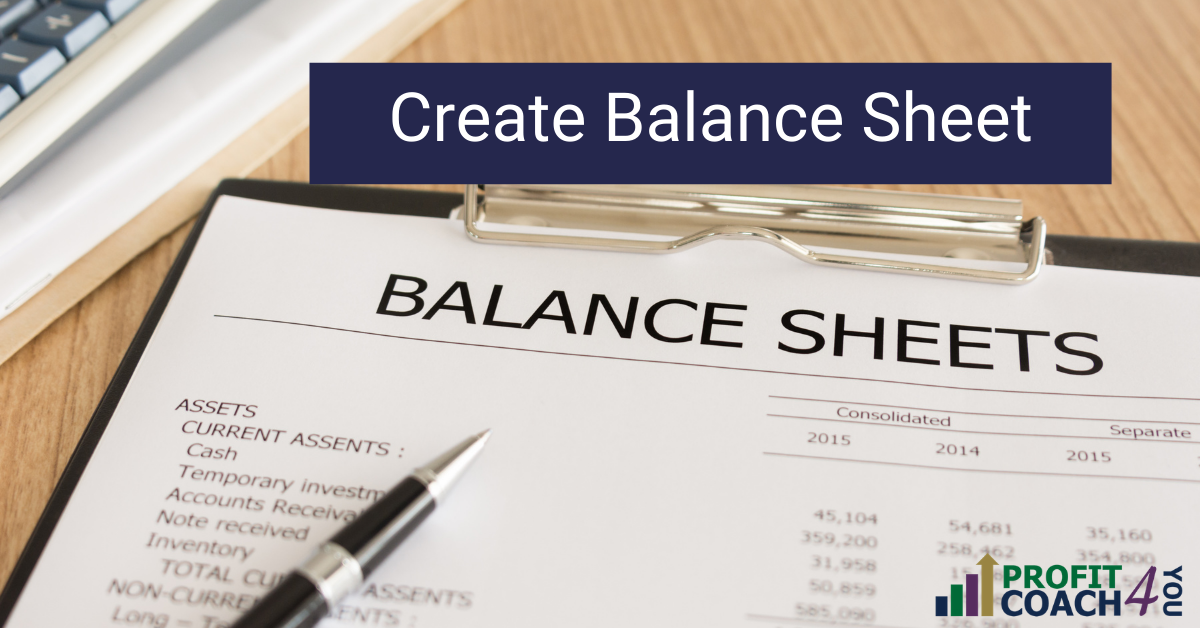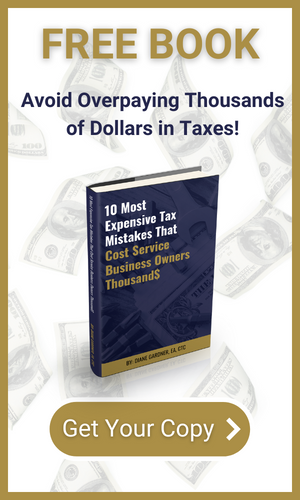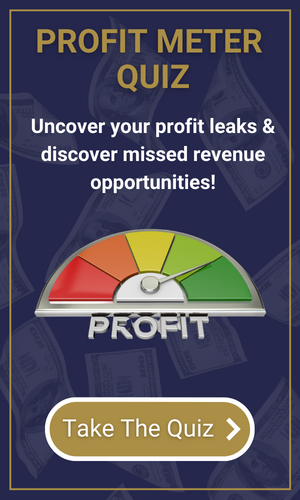Understanding financial numbers is a skill.
It takes time and effort to get comfortable with working with these numbers and making sure everything is accounted for, but it’s vital to the long-term success of your service business.
The good news is that understanding your finances isn’t rocket science, and every business owner can get a handle on at least the basic numbers they need to know to figure out what’s going on under the hood of their business.
Information such as your income and expenses, employees, customer information, inventory, marketing lists, vendors, etc. need to be tracked.
With accurate information, you are on your way to improving your profit margin.
The income statement (Profit & Loss Report) tells you what the income and expenses were for a period of time and these figures describe the performance of your service business company, so it’s pretty important.
A balance sheet is a snapshot of what you own (your assets) versus what you owe (your liabilities) at a given date in time. It is a representation of a company’s financial health at that moment, and if your company isn’t financially healthy, you will have trouble borrowing money, expanding your business, making payroll, and even paying your monthly obligations.
In addition to those two key documents, let’s talk about the essential numbers you need to know so you can make better decisions about your business.
First up, let’s go over some definitions so we’re all on the same page with what we’re talking about.
Bookkeeping – Bookkeeping is simply the recording of financial transactions including sales, purchases, income, expenses, and payments. Usually, this is done with software like Quickbooks or something similar.
Income – Income is your sales generated from the sale of goods or services before subtracting anything for costs or discounts. There is another type of income which is any other money received in the business such as interest, dividends, discounts, finance charges, or anything else that’s not directly related to the product or service of the business.
Cost of Sales – Also known as Cost of Goods Sold (COGS). This is the cost of items that are being sold by the business. Example: It is the wholesale price of the product being sold or the job materials and other direct costs of a specific job.
Gross Profit – Gross Profit is the difference between the sales and the cost of sales.
Expenses – An expense is anything paid for by the business that is needed to run the business including wages, supplies, and other overhead items.
Net Profit – Net profit is what is left over after deducting the operating expenses.
Assets – Assets are the items that are owned by the business. They generally are divided into two categories; current assets and fixed assets.
Current assets generally are items that can be converted into cash easily and quickly and are considered short-term (under 12 months). Examples of current assets are bank accounts, petty cash, short-term investments, accounts receivables, inventory, etc.
Fixed assets consist of buildings, equipment, vehicles, etc. These are items that are going to be a part of the business for a long time and are necessary to generate income. They generally can’t be converted to cash easily.
Liabilities – Liabilities are debts owed to others such as credit cards, lines of credit, loans, and mortgages. Liabilities can be long-term or short-term in nature. Long-term liabilities are debts that will take longer than 12 months to be paid off. Short-term liabilities will be paid off in 12 months or less.
Equity – This is the investment in the business that has been made by the owner. Equity accounts may be titled owner’s capital, partner capital, or stockholder’s equity/retained earnings depending on the type of business entity.
Income statement – This report is a record of the day-to-day operation of the business during the year. At the end of the year, the values are closed out and brought to zero and only the profit or loss is carried over to the balance sheet.
Balance sheet – The balance sheet is a report which is made up of assets, liabilities, and owner’s equity and is one of the basic building blocks of your financial success. It is a snapshot of the status of the business at any point in time. These values are carried over from year to year.

Once you have been using an accounting system for a couple of years, you can run reports comparing to a particular period of time, such as last month or last year.
This information will enable you to watch for trends in your business and allow you to take corrective action or prepare for more active periods of demand. You will be able to forecast numbers into the future which allows you to make better decisions regarding the purchase of equipment, company growth, or expansion.
These are the kinds of numbers that allow you to make intelligent decisions regarding when to hire, how much inventory you need, or how much money you should be spending on marketing.
You may also want to see a report which shows the expenses as a percentage of your sales which allows you to track your costs and work on improving your net profit percentage.
While not the whole financial picture of your business, these kinds of information are the basis for a financially healthy service business.
This allows you to improve your numbers, which ultimately improves your profit margin.
If you want to have a professional help you gather all the necessary information from your business so you can make better decisions then reach out to us at www.profitcoach4you.com.





